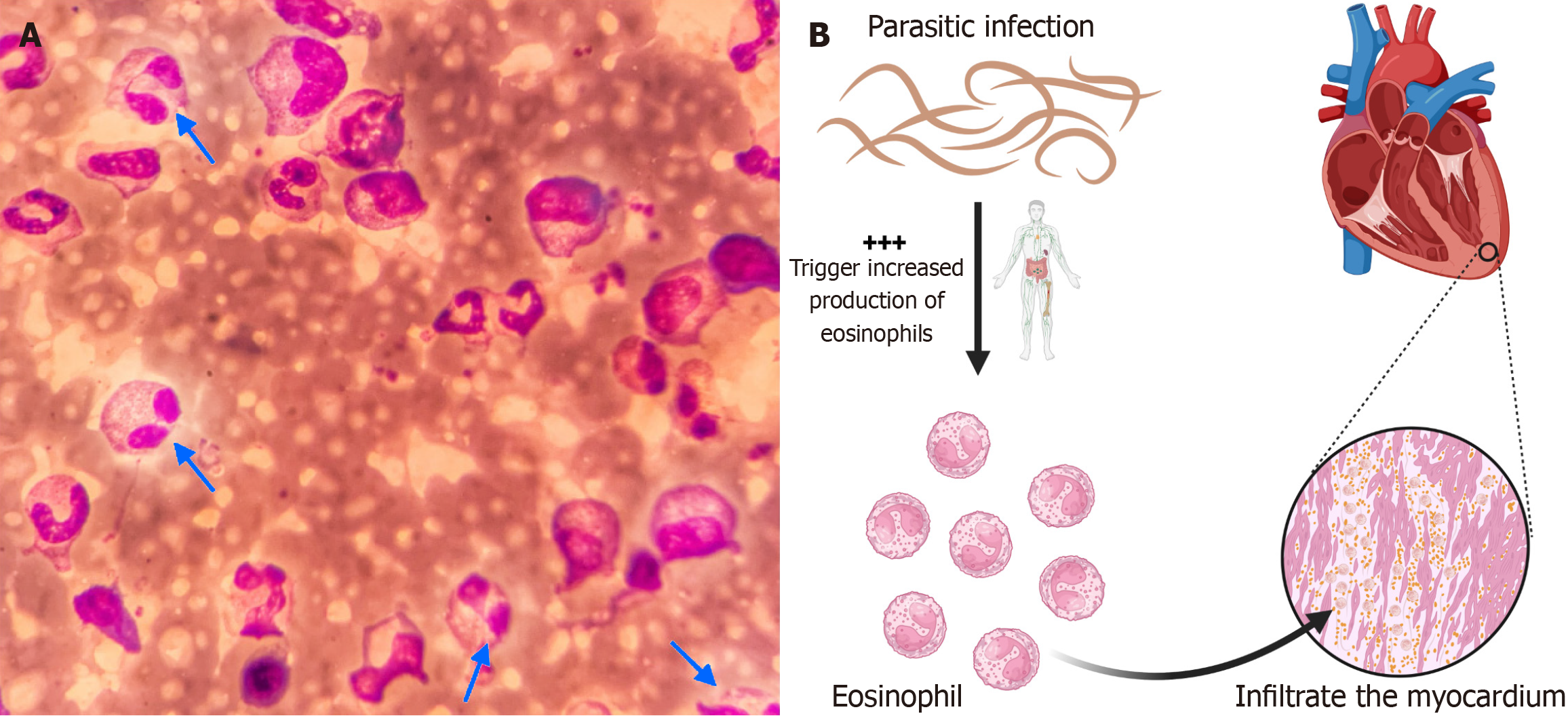Copyright
©The Author(s) 2025.
World J Cardiol. Jun 26, 2025; 17(6): 107729
Published online Jun 26, 2025. doi: 10.4330/wjc.v17.i6.107729
Published online Jun 26, 2025. doi: 10.4330/wjc.v17.i6.107729
Figure 2 Eosinophilic activation and myocardial infiltration in the context of parasitic infection.
A: Bone marrow smear from the patient reveals a markedly increased number of eosinophils, as demonstrated on the peripheral blood film, suggesting eosinophilic hyperplasia; B: Schematic illustration of the proposed pathophysiological mechanism: Parasitic infection triggers immune activation, leading to eosinophil proliferation and activation. Activated eosinophils subsequently infiltrate the myocardium, contributing to tissue inflammation and injury.
- Citation: Luong TV, Hoang TA, Pham NN, Nguyen STM, Tran QB, Nguyen HM, Doan TC, Ho BA, Dang HNN. Eosinophilic myocarditis due to parasitic infection: A case-based minireview. World J Cardiol 2025; 17(6): 107729
- URL: https://www.wjgnet.com/1949-8462/full/v17/i6/107729.htm
- DOI: https://dx.doi.org/10.4330/wjc.v17.i6.107729









